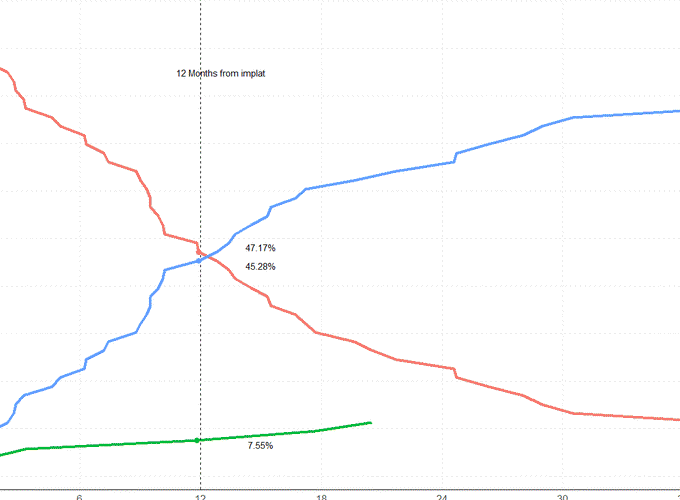Results of new-generation intrapericardial continuous flow left ventricular assist devices as a bridge-to-transplant
 Kaplan-Meier curves of survival on waiting list
Kaplan-Meier curves of survival on waiting list
Results of new-generation intrapericardial continuous flow left ventricular assist devices as a bridge-to-transplant
Abstract
Aims We analysed the outcomes with the use of a newgeneration continuous-flow left ventricular assist device (CF-LVAD) as a bridge-to-transplant (BTT). Materials and methods We included all patients implanted with an intrapericardial CF-LVAD as BTT, between January 2012 and December 2016. Primary outcomes were overall survival, survival on waiting list and postheart transplant (HTx) survival. The outcomes after HTx were compared with those of a contemporary cohort of patients transplanted without previous CF-LVAD (No-LVAD group, nU73). Results We included 53 patients with a median age of 52 years (interquartile range: 43-59 years). Seventy-two percent were in INTERMACS profile 1-2 before implant; all entered the HTx waiting list after receiving the CF-LVAD. HTx was performed in 42 (79%) cases (LVAD group). Overall estimated survival (considering both pre-HTx and post-HTx) was 89% [95% confidence interval (CI) 81-98%] at 1 year and 80% (CI 70-92%) at 2 years. The estimated survival on waiting list was 91% (CI 80-100%) at 6 months, whereas the 1-year estimated post-HTx survival was 88% (CI 79- 98%). The Kaplan-Meier curves of survival after HTx of LVAD versus No-LVAD group were comparable (log-rank PU0.54), as well as the rates of post-HTx adverse events. A multivariable model of survival after HTx, accounting for the most relevant patient characteristics, identified LVAD use as a significant protective factor [LVAD versus No-LVAD hazard ratio 0.22 (CI 0.06-0.91)]. Conclusion The use of new-generation intrapericardial CFLVADs as a BTT resulted, in our series, in satisfactory pre- HTx and post-HTx outcomes.